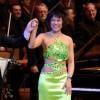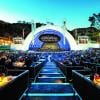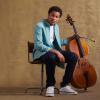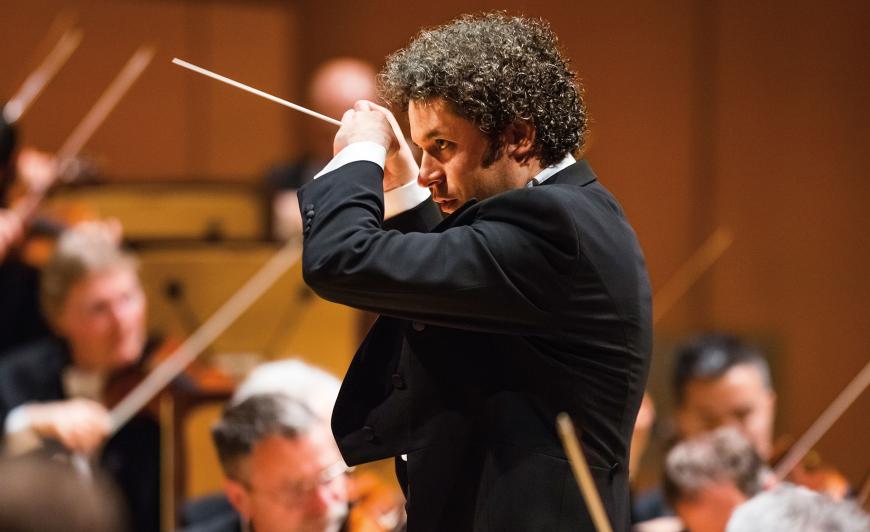
Gustavo Dudamel opened the Los Angeles Philharmonic’s 2023–2024 subscription season this past weekend with some creative programming — an all-20th-century lineup that included adventure and even a welcome surprise. Maybe it was a nod to the 20th anniversary of Walt Disney Concert Hall’s opening this month.
Certainly, it was star time, with the much-hyped young cellist Sheku Kanneh-Mason taking the stage Saturday, Oct. 7. His vehicle was Dmitri Shostakovich’s Cello Concerto No. 1, one of the brooding, occasionally sardonic post-Stalin documents that the composer unveiled during the Khrushchev Thaw.
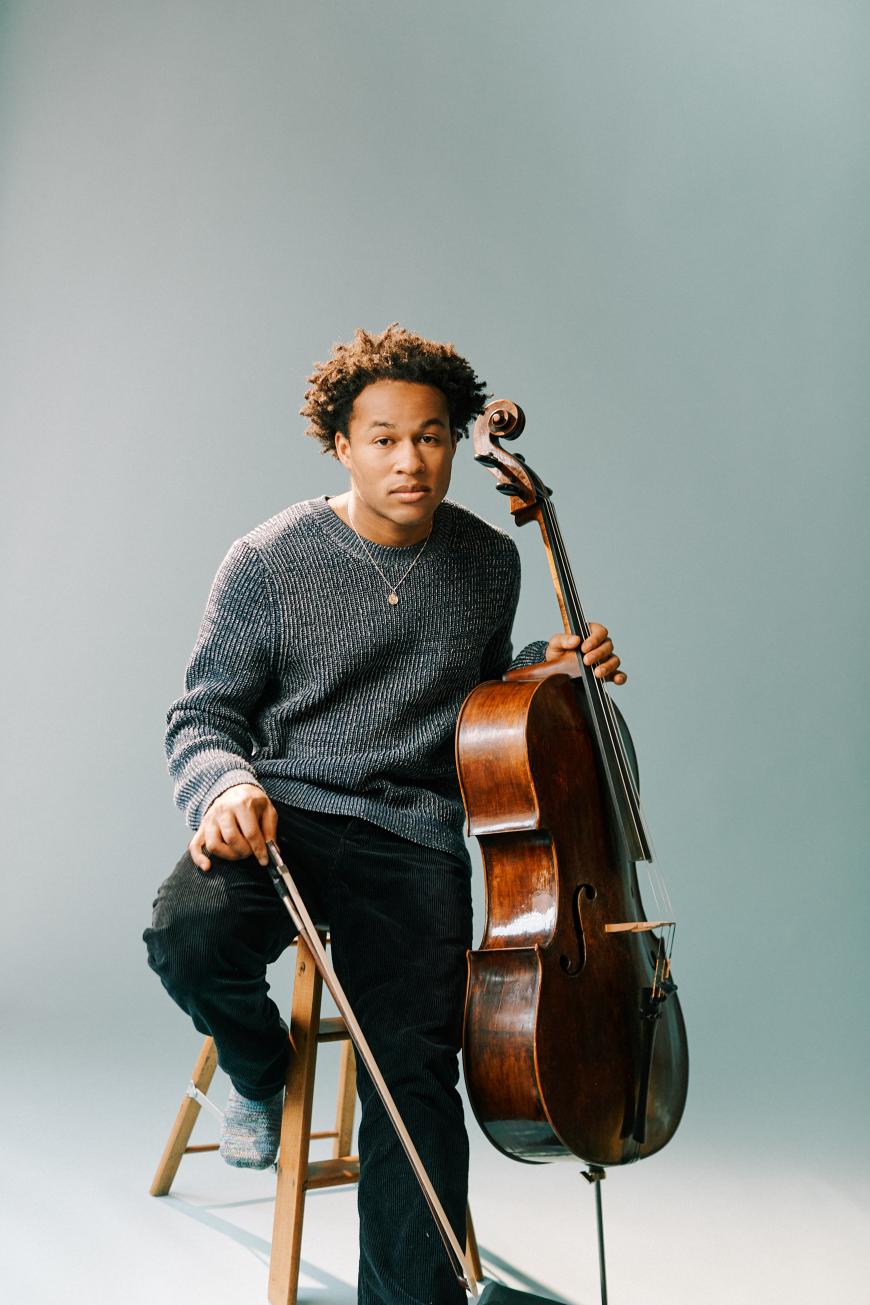
This is a relatively late entry of that breed, written in 1959 for the formidable technique and larger-than-life tone of Mstislav Rostropovich, who took it to America in November of that year, recorded it for the ages with Eugene Ormandy and The Philadelphia Orchestra under the composer’s supervision, and played it right here in Los Angeles two and a half weeks later. The communicative power of that recording hasn’t been topped since — not by a slew of world-class cellists nor even by the mighty Slava himself.
Kanneh-Mason has been working at it awhile, having recorded the piece at age 18 on his debut album, Inspiration (Decca), after winning the 2016 BBC Young Musician of the Year competition with it. Those mischievous first-movement opening notes — a four-note pattern taking off from Shostakovich’s musical signature — now have more expression and point than before, with the LA Phil’s solo horn producing equally impudent comments flanked by nagging bursts from the winds.
In the second movement and succeeding cadenza, Kanneh-Mason’s tone became a lot warmer, and he sustained the line well. Yet at this slow tempo, there was a continued lack of intensity and a sullenness that you can understand the case for but that also make for a performance that isn’t as riveting as it could be. Fortunately, he roused himself in the last part of the cadenza, and the finale went pretty well, with Dudamel driving it along.
The real treat of Kanneh-Mason’s appearance was the encore. Normally you would expect a solo turn, usually a movement from a J.S. Bach cello suite. But on this evening, Kanneh-Mason took a seat in the LA Phil cello section, and Dudamel led the eight players in a broadly luscious performance of the Prelúdio (Modinha) from Heitor Villa-Lobos’s Bachianas Brasileiras No. 1, with Kanneh-Mason delivering the solo melodic lines luminously. (It’s also on the cellist’s latest Decca album, Song.) Now there’s an idea for Dudamel’s remaining years as music and artistic director of the LA Phil — do a cycle of all nine Bachianas Brasilieras, each one different from the last and all worth hearing. Then record them. Given Dudamel’s affinity for Latin American music, a recording would sweep the field.
In the meantime, Dudamel delivered a down payment on any possible future Villa-Lobos activity with a performance of the prolific Brazilian composer’s 1917 ballet Uirapuru — one of at least 20 that Villa-Lobos wrote. It was supposed to have been performed here in May 2022 but was scratched from the concert at the 11th hour (perhaps it required too much rehearsal for an orchestra already overloaded with new music to learn). As the cliche goes, better late than never.
Uirapuru is an episodic, at times almost cinematic tone poem about a songbird that turns into a handsome man who is killed and then resumes its former feathered form. Some hear Igor Stravinsky in this music, opening as it does with an emphatic blast that might bear some resemblance to the splashy beginning of the Russian composer’s Song of the Nightingale. But exotic elements like the solo flute over the xylophone and the piano rumbling in the bass clef place it elsewhere. Dudamel gave the ballet a kick of urgency, and the many recording microphones lurking overhead were hopefully taking everything down.
Back in 2022, Uirapuru was on a program that included Stravinsky’s complete Firebird, thus pairing two ballets written during the 1910s and starring winged creatures. Dudamel stuck with an edited version of that plan, following Villa-Lobos with the 1919 Firebird Suite, which has become quite the calling card for the conductor in L.A. This time, there was extra zip and fire in the “Dance of the Firebird,” a more dynamic rendering of an already dynamic conception of the “Infernal Dance,” a Berceuse of hushed intensity, and a Finale at breakneck speed. Good playing all around.


